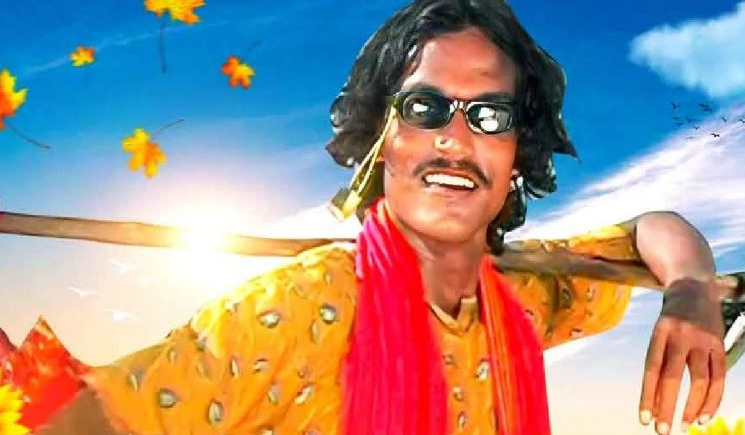How ‘Chi Chi Chi Re Nani Chi’ Became a Viral Sensation After 30 Years
Music has the incredible power to transcend time, and the recent resurgence of the Odia Sambalpuri song ‘Chi Chi Chi Re Nani Chi’ is a perfect example. Originally released over two decades ago, the song, produced by Sitaram Agarwal under Siddharth Music, has unexpectedly captured the attention of audiences across India and beyond. What was once a regional favorite has now transformed into a viral sensation, thanks to social media platforms breathing new life into this folk classic.
With its catchy rhythm, lively beats, and deep cultural roots, the song has not only won hearts but has also inspired numerous remakes and adaptations in different languages. Its growing international recognition has further cemented its place in India’s rich musical landscape.
To understand the journey of this song—from its inception to its newfound global fame—we spoke to Sidhartha Agarwal, son of producer Sitaram Agarwal and a key figure in Siddharth Music. In this exclusive interview, he shares behind-the-scenes stories of the song’s creation, insights into the late Satya Narayan Adhikari’s legacy, and thoughts on the impact of this unexpected resurgence.
Read on to discover the fascinating story of ‘Chi Chi Chi Re Nani Chi’ and how it went from an Odia folk classic to a viral musical phenomenon.
Could you share the inspiration behind producing 'Chi Chi Chi Re Nani Chi' three decades ago?
Being a very creative individual with a unique perspective and approach to life, Mr. Satya Adhikari created his first album, ‘Bali Phul’, as a satirical take on the vices of society and of life. Chi Chi Chi Re Nani was one of those songs which portrayed how people fail to recognise humanity over money.
What led to the collaboration between your father, Sitaram Agarwal, and the late Satya Narayan Adhikari, who composed, wrote, and performed the song?
The song was composed, written and sung by Mr Satya Adhikari himself. His passion for creating music and singing had always been there in him. He was a major part of the Doordarshan community in Jeypore. He had created and dubbed his album here in our studio in Nuapatna. After it was done, he had a discussion with Sitaram Agrawalla where he said he wanted his album to be released under our then label, JE Cassette Company.
What were the initial challenges in producing and promoting the song when it was first released?
Amidst all the quintessential songs that were being released at that time, this particular album was unique and very different. Where other songs were mainstream 90’s romantic, dance or sad type songs, Mr Adhikari’s songs veered towards a more unique concept, which took quite a lot of time and effort in producing this creative endeavour, but the very uniqueness of the songs made it stand out amidst the crowd, making it a popular hit back then.
Was there any particular inspiration behind the lyrics or composition of the song?
There was no particular inspiration as far as I know. But as I recall, a lot of songs from the album created by Satya Adhikari was a satirical take on the vices and evils of society. For example, a very popular song from the album - E Nani Bihari Pani - showcased the vices that are brought by liquor in rural areas. Similarly, Chi Chi Chi Re Nani is said from the perspective of a heartbroken man who realises that while he went about to make something of himself, the one who he loved is now betrothed to another, and he is now regretting being with someone who prioritised money over love.
What do you recall about the recording process? Were there any memorable incidents during the making of the song?
Mr. Adhikari had come to our studio with his compositions and lyrics and he had formed the track and dubbed the song with us, and our Founder & MD, Mr. Sitaram Agrawalla himself had overseen the track arrangement and himself recorded the voice of Mr. Adhikari. He was supposed to record it for another producer but instead, he decided to assign all rights and give it to Mr. Agrawalla, who was more than happy to have it from him.
How were Bibhuti Biswal and Sailaja Patel selected for the music video, and what was their contribution to bringing the song's narrative to life?
Around the time the videos were shot, since the song was about such an unique topic, there were auditions held by the director, Mr. Manabhanjan Nayak, and the actors were selected due to their raw and fresh take, which reflected in the song. Sailaja Patel went on to do another song in the album, ‘Sun Sun Sun Re Saang’, which is a very beautiful romantic song.
Could you provide insights into the direction and storytelling approach taken by Manabhanjan Nayak for the music video?
Mr. Manabhanjan Nayak had got a lot of help from Mr. Adhikari and Mr. Agrawalla, with the storyboarding of the songs, as Mr. Adhikari was the original author, his insight on how he wrote the lyrics inspired the director into framing his shots and building a very impactful story which holds up even after 25 years of it's conception.
What was the audience's reaction when the song was first released, and how did it compare to its recent viral resurgence?
The audience back then had greatly appreciated this song, as well as the other songs in the album. Though due to the lack of social media back then, the distribution of the song was very localised and hence, it was not as viral back then, though it got a lot of critical acclaim.
In your opinion, what factors contributed to the song's sudden popularity after three decades?
The digital media of this era, with short form content like instagram reels & youtube shorts being prevalently used, a lot of content creators and social media users created their own take on the song, following which it spread like wildfire, currently being consumed across all platforms in a huge amount, leading to the song being rediscovered all over again.
When did you first realize that the song was going viral again after so many years?
We track the progress of many of our songs so that we can push for its success and make it viral. So this was during the first 15 days of January, when we noticed that a lot of users have been creating reels and shorts on this song, which made us actively track the progress of the song, and that is when we noticed through data and analytics that the song has picked up traction since before 1st January. And the fact that it kept growing at an unimaginable rate is when we realised it is going viral.
Do you think social media algorithms played a role in reviving interest in this song?
Very much so, but I would also credit the people who suddenly took interest in this beautiful age old song which has meaning and prioritised it over other songs in the market. Social media algorithms only push content when it is being liked and favored by the audience, so I will say the major role is in the people who actively took interest in the song by creating content on the song.
Have any celebrities or well-known personalities reached out or commented on the song’s resurgence?
A lot of celebrities who are of national fame, like comedian Bharti Singh, Mohammed Nazim, the Saath Nibhana Saathiya fame, and more such regional celebrities have not only reached out, but actively created content and used our song, which is a good sign for the song's resounding success.
How does it feel to see younger generations embracing a song that was made three decades ago?
It is great to see younger generations take such deep interest and passion for this song, reviving interest in old songs, and making content on our song, amidst a sea of content, which goes to show the power of good content will always remain timeless.
How has the virality of the song impacted the current standing of Siddharth Music and its reach?
Our standing as a music label has always been prestigious with a lot of our songs being iconic. With the success of this song, we have proved the power of good content, which is timeless, no matter the genre, language or other factors.
How do you feel about the song's international recognition, such as its performances in countries like Kuwait, and Kili Paul’s viral singing reel?
It is a thing of pride for our very own Odisha's Koraput, as the song put the Koraputia (Desia) language in the mainframe, with the song gaining not only national but international fame, to the point that even at the cricket match held in our Barabati Stadium, the song was being played non-stop.
What do you think makes the song so timeless and appealing to audiences across different languages and cultures?
The song, as well as the video, transcends language, genre and culture, as the very theme of the song is something that reflects on human nature, being self introspective without any vulgarity, and having a deep philosophical meaning. The composition itself is a very lively song, but the lyrics depict heartbreak, like for example how Sukhbir's Ishq Tera Tadpave is a hit, for the very same reason this song has touched the hearts of the people.
What are your thoughts on the numerous remakes and adaptations of the song in various languages?
It’s good to see people from various cultures and languages unite over a song and create their own twist, it is such a testament to the power of good content.
Has Siddharth Music collaborated with any artists or music labels for official remixes or adaptations?
As of now we have created a female Odia version with Antara Chakraborty and have created various DJ mixes as well as various language versions like Bangla, Chhattisgarhi, Purlia and soon we shall be creating Santali, Tamil and Telugu versions.
Given the song's success, how do you think it reflects on the legacy of Satya Narayan Adhikari, and what are your thoughts on the calls for honoring him posthumously?
Owing to the massive success of the song, it’s good to see him being recognised for putting Koraput and Odisha on the national map. We have posthumously honoured him by calling his spouse and his daughter) and awarded them appropriately.
Are there any plans to remaster or re-release 'Chi Chi Chi Re Nani Chi' to cater to the current audience?
We have actually been developing something really huge which we shall be revealing pretty soon, it’s gonna be a big way to memorialise Mr Adhikari and the song.

How does Siddharth Music plan to preserve and promote traditional Odia music in the digital age?
We as a three decade old music label have always strived to push all the timeless classics, and we have been republishing the songs to bring the old catalogue’s visibility to a maximum, and also create unique game plans to market it to the gen-z audience, as the conservation of our cultural heritage is essential.
Are there any upcoming projects where you plan to bring back other classic Odia songs?
We have been developing a lot of projects like remakes of classic Odia film songs, recreating some iconic Odia songs from 90s-2000s era and also been developing devotional and spiritual songs lost to the time, so that our generation and the future generation can cherish, both the old and the new presentation.
Do you think the success of ‘Chi Chi Chi Re Nani Chi’ will encourage the Odia music industry to experiment more with folk and traditional sounds?
The Odia music industry is already ahead with a lot of talented passionate musicians who have been helming the industry and have been open to experimenting with folk and traditional sounds, so that’s something I’m very proud of.
What message do you have for young musicians and composers in Odisha who want to make a mark in the industry?
My message to the young musicians and composers is that always stay humble to your roots, and never forget your own heritage and culture, instead of parroting other cultures. We have such a rich and unique culture that can be explored and that should always be treasured.





